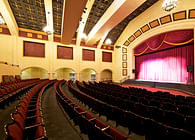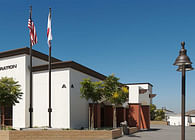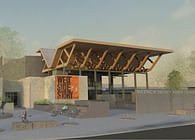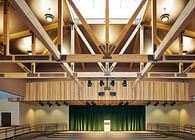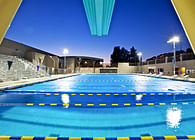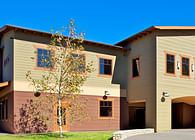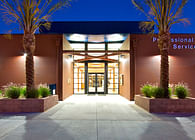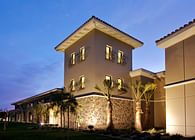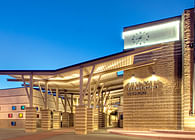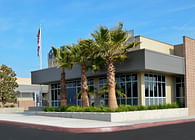
Laguna Hills, CA | Oceanside, CA
Perris Union High School District
California is the nation’s most agriculturally productive state, producing more than 400 commodities and the world’s fifth largest supplier of food and agricultural products. Six of the top-producing nurseries and horticulture production facilities are located in Southern California. The communities in which the Perris Union High School District spans are rich with agricultural heritage. In November 2010, construction of a 4.5-million dollar state-of-the-art agricultural facility will commence. This flagship facility will serve to elevate the school’s agricultural program, standing as a model facility not only for the District but also the surrounding community for many years to come. As the third high school and agricultural program in the District, the Heritage campus (circa 2007) will be well equipped to continue their strong tradition as one of the top agricultural programs in Southern California.
Of the school’s overall student population, nearly 30-percent of students are enrolled in the Agriculture Department. This facility will allow five of the six pathways within the Agriculture and Natural Resources Industry Sector to be taught at Heritage High School. The Agricultural Research Center, or A.R.C. for short, will provide students with unique opportunities for both theory and practice. For example, the Laying Barn, or egg production barn, will allow for an entrepreneurial program providing students the opportunity to own and operate a small-scale egg production facility. The significance of this program is that it will allow students to work towards a prestigious Golden State Future Farmers of America degree.
A great deal of research and development was required to design a facility capable of educating students while simultaneously operating as a functioning farm. Blending these two objectives successfully required thorough investigation and evaluation of every aspect of the agriculture program. A site facilities committee comprised of students, parents, community members, district staff and architects formed in December 2008 to start planning the empty 2.5-acre site. An extensive and exciting design process soon ensued. Given the budget constraints and size of the project, the facility had to be designed for a possible two-phase construction process pending C.T.E. Facilities Funding. The first phase will establish site infrastructure and the main research building, along with the orchard and pastures. The second phase will integrate the ancillary barns and additional agriculture areas thus completing the overall facility. The collaboration of trusting clients, passionate educators and open-minded designers all contributed to the final design. As a result the A.R.C. will be the union of a rural farmland setting to a contemporary academic campus. It exhibits traditional farm design while complementing modern form and proportion of the existing campus architecture.
The career courses offered at the A.R.C. will allow students to develop foundational knowledge and skills within pathways of both animal and horticultural agriculture. The A.R.C. will advance the curricula from theoretical classroom instruction to practical application, creating a complete agriculture education experience. This facility will also allow students who participate in the program the opportunity to complete industry-validated certificates, take course offerings for college while still in high school and participate in job shadowing and internships with local industry partners.
As a pilot program for the District, the A.R.C. will also provide students with an introduction to renewable energy and sustainable design. The orientation of the agricultural research building has been positioned with the long axis of the building due East West azimuth, allowing 120 photovoltaic cells to face due south on its gable roof and takes advantage of optimal sun angles for natural lighting with its 28 clerestory operable windows. Four wind spires will also be positioned at the Northeast pasture to aid the energy demand and provide an educational tool for renewable energy. All together, the renewable energy systems will offset 33-percent of the buildings energy requirements. The A.R.C. also features an innovative roof-to-wall insulated metal panel wrap, giving all buildings a continuous insulating factor of R-30, thus addressing temperature shifts from outside-in rather than the inside-out.
The A.R.C. also includes a shade and greenhouse, rabbit barn, livestock scales and immobilization equipment, composting bins, rose garden, and various student organic garden areas. The plants will be used as demonstrations in landscapes onsite and competitive events as well as permanent material in overall campus beautification. It will decorate F.F.A. banquets, school functions, community fairs and provide a method of recruitment and awareness of agriculture. The facility will provide the District and High School a place to host local fairs, field trip destinations for school students, and help local farms with livestock care and study. The facility will undoubtedly contribute to the betterment of the educational experience and the overall community.
Status: Built
Location: 26001 Briggs Road, Romoland, CA
